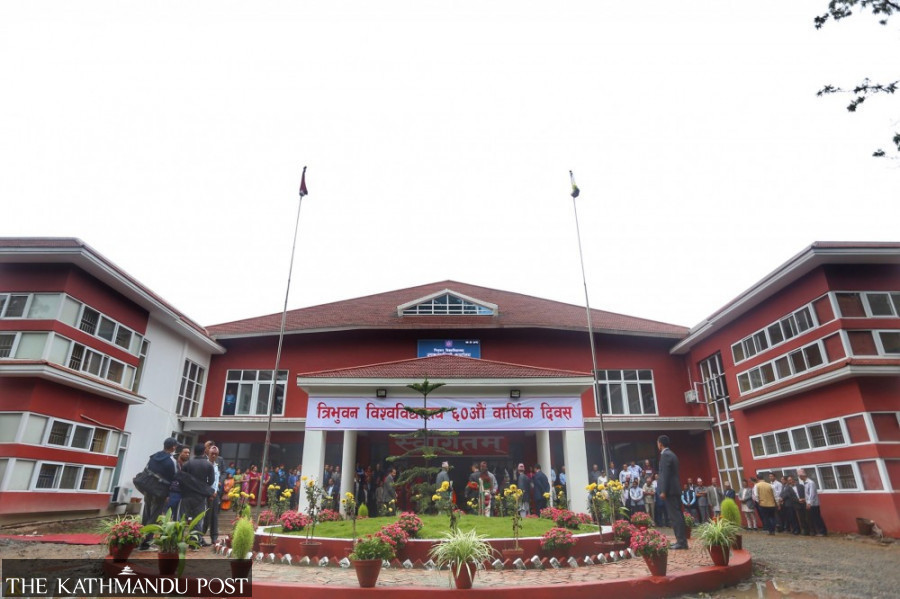Editorial
Going, going
Universities need more than just a merger plan to keep the number of students intact.
Tribhuvan University has finally called for merger applications from colleges under it that are struggling to sustain themselves due to the falling number of students. Although a little late, this is the right move from the university that is having a tough time just surviving. Its current plan emerges out of the desperation among colleges to stay afloat amid uncertainty about their future.
The country’s oldest university, though, is not the only institution facing a student crunch. As per the University Grants Commission, there are 634 colleges across the country that run with fewer than 100 students. An additional 277 colleges have under 200 students. Together, they constitute more than half the number of total colleges in the country operating under over a dozen universities. Even other established educational institutions have been dealing with declining student numbers. Kathmandu University, for instance, has just a 70 percent enrollment rate, which makes it difficult for a privately run institution with limited funding and academic support from the government to sustain and provide quality education. While the TU’s merger plan might bring some respite to the colleges struggling to survive, it should be complemented by other reforms at a structural level.
The crisis facing these colleges reflects a general decline in the university system in Nepal in the past decade, as the number of students seeking to go abroad continues to rise. Moreover, unhealthy competition among universities often leaves the students frustrated with the education system here. Tribhuvan University, for instance, usually publishes its results so late that the students wanting to join other universities in the country cannot do so, which ultimately forces them to look for options abroad. If every other student wants to go abroad, it is reflective of not just their desire to pursue better opportunities but a desperate lack of prospects within the country.
The decline in the university system also has to do with decades of haphazard distribution of affiliation given to groups wanting to run colleges. Hundreds of colleges operating under various universities in the country have neither skilled and qualified staff and faculty nor the infrastructure that supports quality education. In an age where students have information about global universities at their fingertips, the colleges and universities in the country have little to excite them. They also don’t trust the education system in Nepal. The fact that the students who graduate from universities and colleges neither get the required skills for workplaces nor good job prospects is a big deterrent. The merger plan, while an essential immediate remedy, is therefore only one of the reforms the universities, particularly Tribhuvan University, need at the moment.
As Prime Minister Pushpa Kamal Dahal and Education Minister Ashok Kumar Rai roam around university campuses wearing convocation gowns, they should keep the formalities aside for a moment and sit down with university administrators to work on a more sustainable plan to retain students in the country and make the colleges and universities more sustainable. And this includes cutting down on politicisation and providing more funds for their upkeep.




 8.12°C Kathmandu
8.12°C Kathmandu














